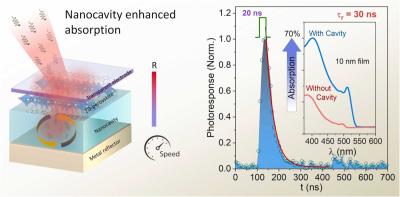Researchers from King Abdullah University of Science and Technology (KAUST), the University of Manchester and Marvell Semiconductor have developed an innovative high-speed photodetector design utilizing ultrathin two-dimensional metal halide perovskites (2D-MHP), coupled with a planar nanocavity to significantly enhance optical absorptance—achieving more than a fourfold increase in a solution-processed 10-nm-thick 2D-MHP film.
This integration facilitates an exceptional response time (30 ns) alongside a high responsivity of 2.12 A W−1. The method is said to overcome traditional constraints related to thickness and absorption, thereby optimizing device speed and dark noise features through active area variation.
Intriguingly, the nanocavity architecture provided a unique protection of 2D-MHP layers, realizing remarkable operational and environmental stability: the team's devices maintain performance integrity for over 150 days.
Notably, the best-performing cavity-enhanced devices exhibit the capability to establish an optical wireless communication link, achieving a data transmission rate of 20 Mbps.
This approach effectively tackles the challenges posed by the low absorption of ultrathin layers, opening the door to new applications in imaging, optical communication systems, and more.


